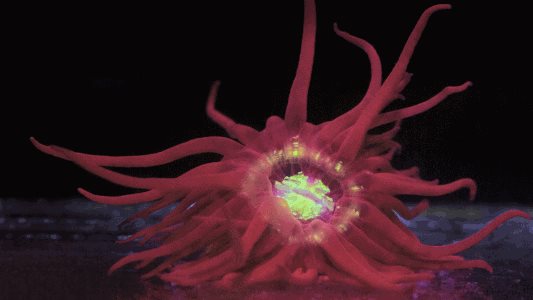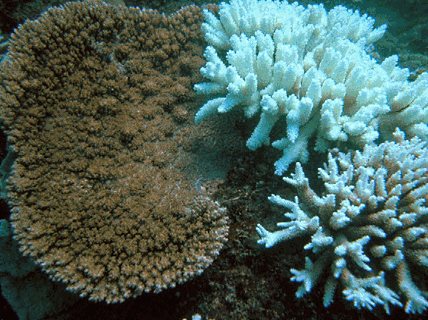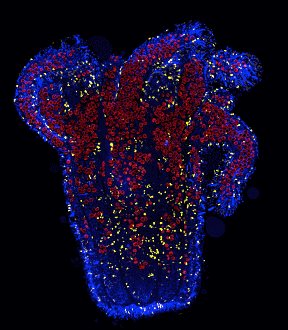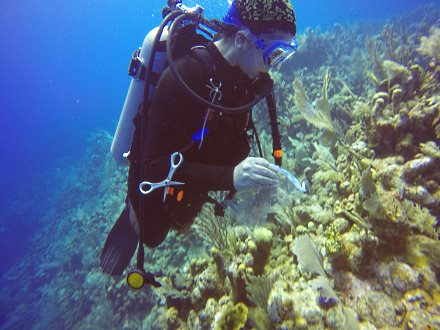SICB Annual Meeting 2019
January 3-7, 2019
Tampa, FL
January 6 – Symposium S9: Chemical responses to the biotic and abiotic environment by early diverging metazoans revealed in the post-genomic age
Extant early diverging metazoans (Cnidaria, Ctenophora and Porifera) have survived in a changing and increasingly complex world, and -omics data are providing novel insights on a diversity of peptides and small molecules that these animals deploy in response to their biotic and abiotic environments. It is clear that surprisingly sophisticated gene repertoires underlie many of the signaling, sensory, defensive and offensive capacities that are typically associated with “higher” animals. This symposium will consider how -omics methods can resolve how environmental and chemical cues shape phenotypes among the basal metazoans by focusing on how these “simple” animals have evolved a diversity of chemical responses to environmental stimuli. The aim is to develop a post-genomic view on the forms, functions and origins of compounds that are biosynthesized in early diverging metazoans in response to environmental cues. Insights on the diversity of such chemical adaptations may afford new perspectives on the evolution of chemical mediators in morphologically simple animals, contribute to a comparative framework for understanding the evolution of chemically mediated organism-environment interactions in the animal kingdom, and thus promote an emerging new field of functional biochemistry. These anticipated outcomes will be fostered by participation of scientists of diverse backgrounds and expertise but united by fundamental interests in comparative and integrative organismal biology.
Sponsors: DEDE, DNNSB, DPCB
American Microscopical Society


Organizers
- Prof. Paul Long, Faculty of Life Sciences & Medicine, King’s College London, London, UK paul.long@kcl.ac.uk
- Dr Laura Mydlarz, Dept. Biology, University of Texas at Arlington, Texas, USA. mydlarz@uta.edu
- Prof. Beth Okamura, Dept. Life Sciences, Natural History Museum, London, UK. b.okamura@nhm.ac.uk
Speakers
S9-1 Sunday, Jan. 6, 07:45 OKAMURA, Beth:
Introduction
S9-2 Sunday, Jan. 6, 08:00 OAKLEY, Todd H.*; PICCIANI, Natasha; SWAFFORD, Andrew J.; OAKLEY, Todd:
Multi-modal sensory systems and the journey to the origin of animal phototransduction
S9-3 Sunday, Jan. 6, 08:30 RYAN, JF*; BOBKOV, YV; BABONIS, LS:
Reframing the origin of neurons
S9-4 Sunday, Jan. 6, 09:00 LEYS, SP*; MAH, JL; KAHN, AS:
Sense and Sensitivity in Sponges: a functional and genomic view
S9-5 Sunday, Jan. 6, 10:00 PAUL, VJ*; FREEMAN, CJ; AGARWAL, V:
Chemical Ecology of Marine Sponges
S9-6 Sunday, Jan. 6, 10:30 LONG, Paul F*; DOONAN, Liam B; GACESA, Ranko; HARTIGAN, Ashlie; JAIMES-BECERRA, Adrian; MARQUES, Antonio C; OKAMURA, B:
‘Beyond Primary Sequence’ – Relating Lifestyles to Variation in Cnidarian Venom
S9-7 Sunday, Jan. 6, 11:00 WINNIKOFF, JR*; WILSON, TM; BACHTEL, TS; FRANCIS, WR; BUDIN, I; THUESEN, EV; HADDOCK, SHD:
Combing Transcriptomes for Secrets of Survival in the Deep Sea
S9-8 Sunday, Jan. 6, 11:30 GOCHFELD, DJ:
Phenotypic plasticity in chemical defense in sponges and corals
S9-9 Sunday, Jan. 6, 13:30 MYDLARZ, LD:
Insights into coral disease and innate immune signaling using genomic and proteomic approaches
S9-10 Sunday, Jan. 6, 14:00 DOONAN, L.B. *; HARTIGAN, A; GACESA, R; OKAMURA, B; MARQUES, A.C.; LONG, P.F.:
Feeling Stressed? The Evolution of Nrf2 Coordinated Oxidative Stress Response in Free-living and Parasitic Cnidarians.
S9-11 Sunday, Jan. 6, 14:30 TRAYLOR-KNOWLES, Nikki G. *; VANDEPAS, Lauren; BROWNE, William E. :
Ctenophore Immunity: A Journey Into The Unknown
S9-12 Sunday, Jan. 6, 15:00 WEIS, Virginia M:
In Sickness and in Health: The Role of Innate Immunity in the Regulation of Cnidarian-Dinoflagellate Mutualisms
S9-13 Sunday, Jan. 6, 15:30 :
Discussion






